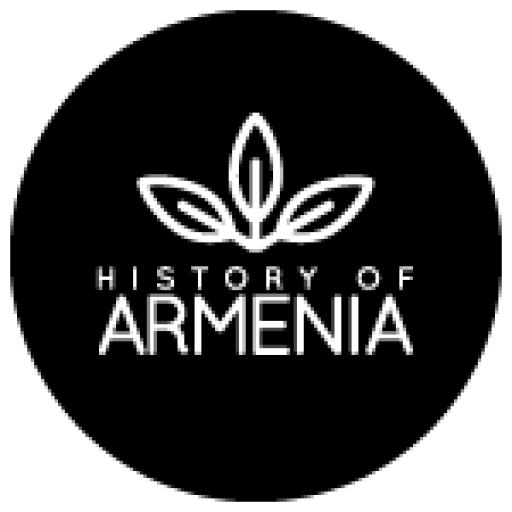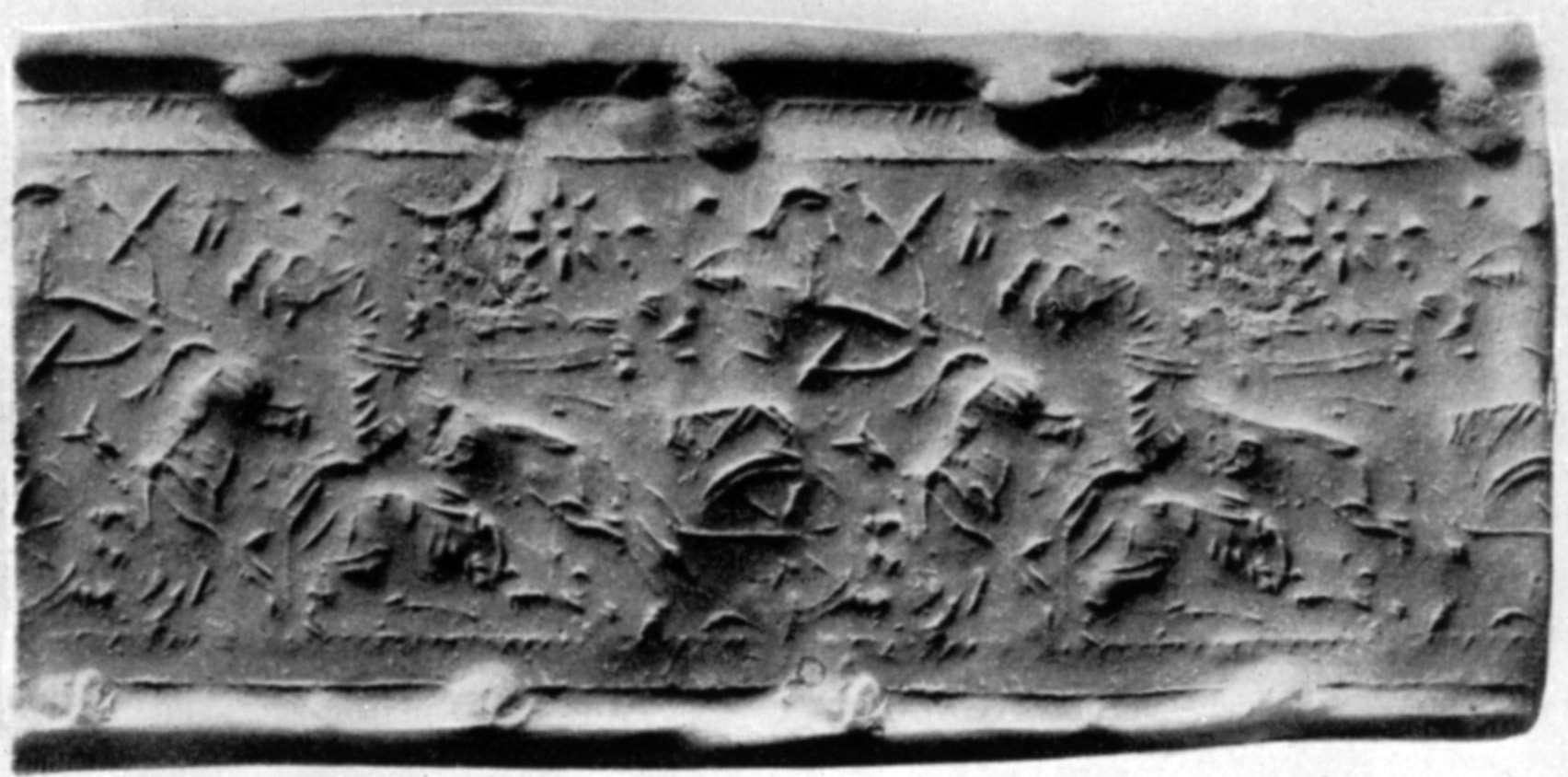Urartu was one of several first-millennium B.C. states that came into existence and prominence in Anatolia after the destruction of the Hittite state around 1200 B.C. The earliest known Urartian written document, a rock inscription at Van (ancient Tushpa), records the earliest reference to the state. There it says that Urartu was ruled by a king named Sarduri (r. ca. 840–830 B.C.), and mentions a male deity, Haldi, the supreme god throughout Urartian history. Urartu was centered in eastern Anatolia, around Lake Van; the capital, Tushpa, was located on the eastern shore of the lake, situated on a high and elongated rock outcrop. In the late ninth century B.C., the state expanded north into the Caucasus, where an Urartian presence was established at sites like Karmir Blur and Armavir. The Urartians also moved east across the formidable Zagros Mountains into northwestern Iran, where many rock-cut texts and various sites—such as Hasanlu, Agrab Tepe, and Bastam—inform us of their local conquests and achievements.

Urartian Seals
Urartian seals came in a wide variety of shapes and sizes including cylinders, stamp-cylinders, faceted stamps (bell-shaped, conical, cylindrical, cube-shaped, zoomorphic, ring, even phallic), flat bi-faced rectangular and discoid) and scaraboid. Excavated seals are known in a variety of materials, including ceramic, black amber, bone, onyx, lapis lazuli, bronze ceramic, frit, jasper, faience, and many other simple, precious, or semi-precious stones. Based on design, workmanship, and shape, Urartian seals have been subdivided into several categories, from royal household and administrative seals to those of petty officials, ritual practitioners, and others. Urartian officials seem to have preferred the cylinder or stamp cylinder seal. Seals used by high officials are further distinguished by a balanced, “Assyrianizing” sense of composition. Their subject matter consists of pollination motifs, which differ from their Assyrian prototypes. All these seals were inscribed in cuneiform sometimes supplemented with hieroglyphic notations. An analysis of currently known material shows that only royal seals and seals of royal officials were inscribed with a person’s name.
Stamp cylinder seals
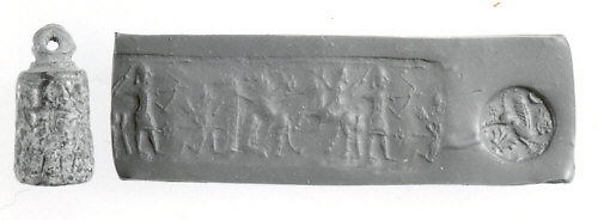
Period: Iron Age III
Date: ca. 8th–7th century B.C.
Geography: Urartu
Culture: Urartian
Medium: Limestone or calcite (?)
Dimensions: Diameter: 1.77 cm Height: 3.45 cm
Classification: Stone-Stamp Seals
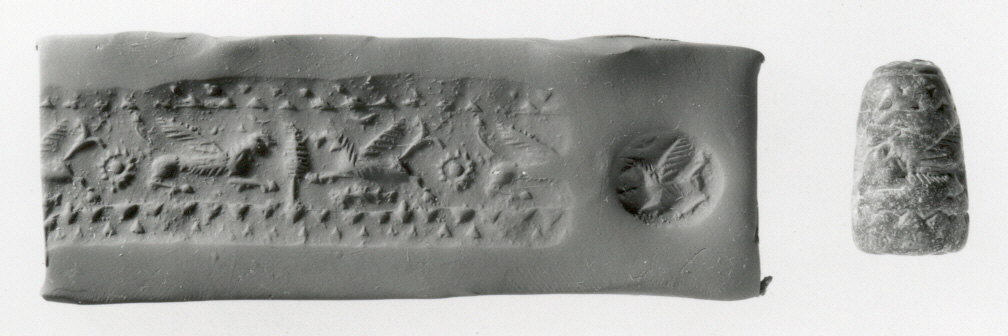
Period: Iron Age III
Date: ca. 8th–7th century B.C.
Geography: Urartu
Culture: Urartian
Medium: Stone, red
Dimensions: Diameter base: 1.46 cm; apex: 1.03 cm Height: 2.55 cm
Classification: Stone-Stamp Seals
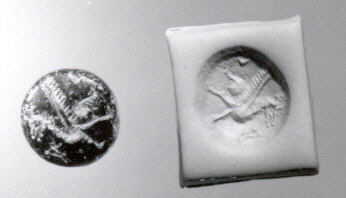
Period: Iron Age III
Date: ca. 8th–7th century B.C.
Geography: Urartu
Culture: Urartian
Medium: Chrysotite
Dimensions: 0.96 in. (2.44 cm)
Classification: Stone-Stamp Seals
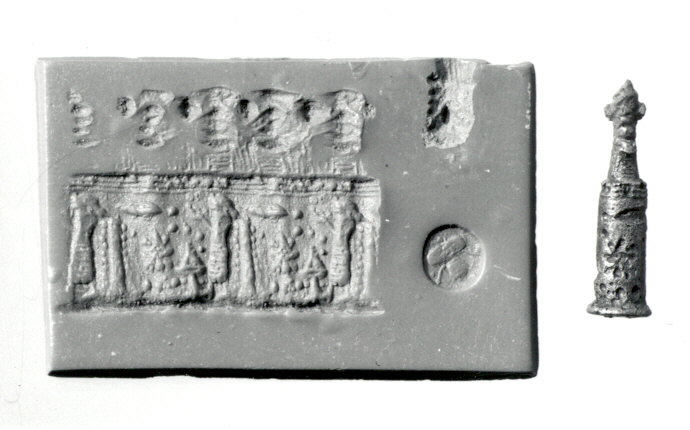
Period: Iron Age III (?)
Date: ca. 8th–7th century B.C.
Geography: Urartu
Culture: Urartian
Medium: Copper/bronze alloy, plaster
Dimensions: 1.15 x 0.33 in. (2.92 x 0.84 cm)
Classification: Metalwork-Stamp Seals

Period: Iron Age III
Date: ca. 8th–7th century B.C.
Geography: Urartu
Culture: Urartian
Medium: Steatite or chlorite, blackish
Dimensions: Diameter: 1.22-1.29 cm Height: 2.8 cm
Classification: Stone-Stamp Seals
Bell-shaped seals
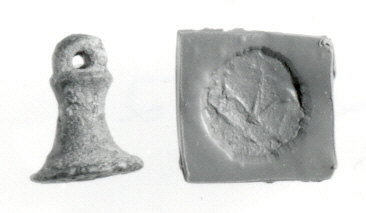
Period: Iron Age III
Date: ca. 8th–7th century B.C.
Geography: Urartu
Culture: Urartian
Medium: Copper/bronze alloy
Dimensions: Diameter: 1.4-1.44 cm Height: 1.66 cm
Classification: Metalwork-Stamp Seals
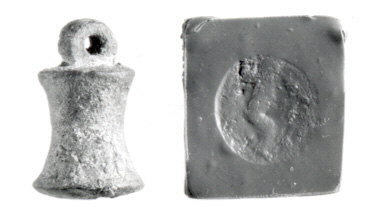
Period: Iron Age III
Date: ca. 8th–7th century B.C.
Geography: Urartu
Culture: Urartian
Medium: Copper/bronze alloy
Dimensions: Diameter: 1.45 cm Height: 2.33 cm
Classification: Metalwork-Stamp Seals
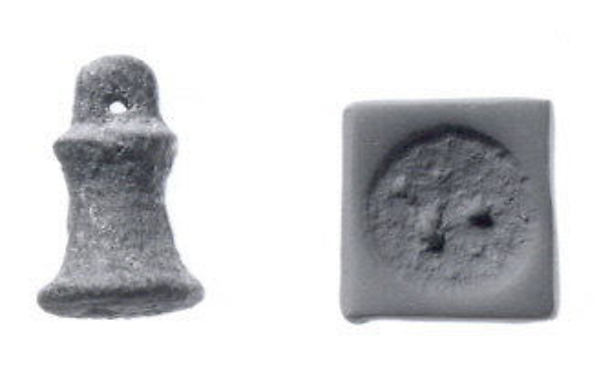
Period: Iron Age III
Date: ca. 8th–7th century B.C.
Geography: Urartu
Culture: Urartian
Medium: Copper/bronze alloy
Dimensions: Diameter: 1.24 cm Height: 1.88 cm
Classification: Metalwork-Stamp Seals
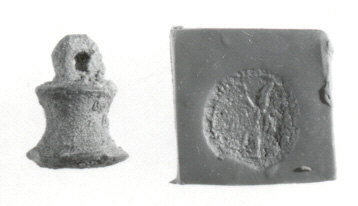
Period: Iron Age III
Date: ca. 8th–7th century B.C.
Geography: Urartu
Culture: Urartian
Medium: Copper/bronze alloy
Dimensions: Diameter: 2.8 cm Height: 1.72 cm
Classification: Metalwork-Stamp Seals

Period: Iron Age III
Date: ca. 8th–7th century B.C.
Geography: Urartu
Culture: Urartian
Medium: Copper/bronze alloy
Dimensions: Diameter: 1.2-1.29 cm Height: 1.74 cm
Classification: Metalwork-Stamp Seals
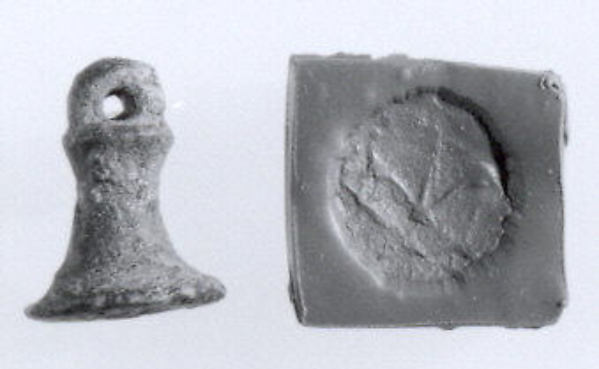
Period: Iron Age III
Date: ca. 8th–7th century B.C.
Geography: Urartu
Culture: Urartian
Medium: Copper/bronze alloy
Dimensions: Diameter: 1.45 cm Height: 1.88 cm
Classification: Metalwork-Stamp Seals
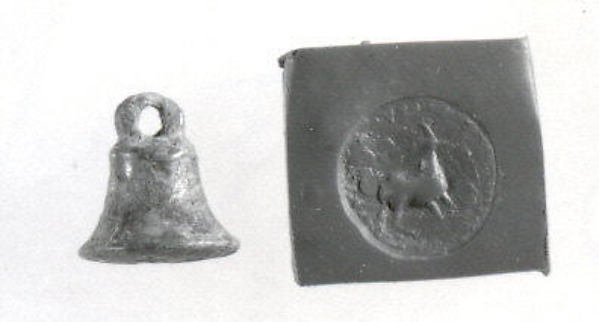
Period: Iron Age III
Date: ca. 8th–7th century B.C.
Geography: Urartu
Culture: Urartian
Medium: Copper/bronze alloy
Dimensions: Diameter: 1.37 cm Height: 1.44 cm
Classification: Metalwork-Stamp Seals
Rectangular Seals
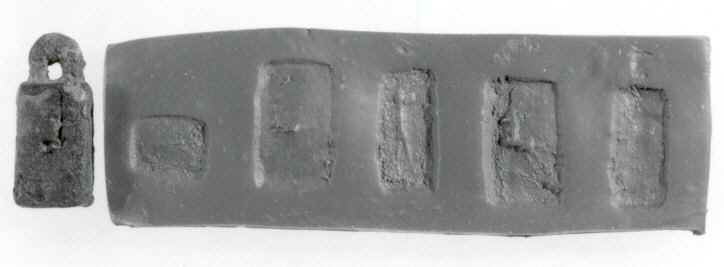
Period: Iron Age III (?)
Date: ca. 8th–7th century B.C.
Geography: Urartu
Culture: Urartian
Medium: Copper/bronze alloy
Dimensions: Seal Face: 1.0 x 0.85 cm Height: 2.24 cm
Classification: Metalwork-Stamp Seals
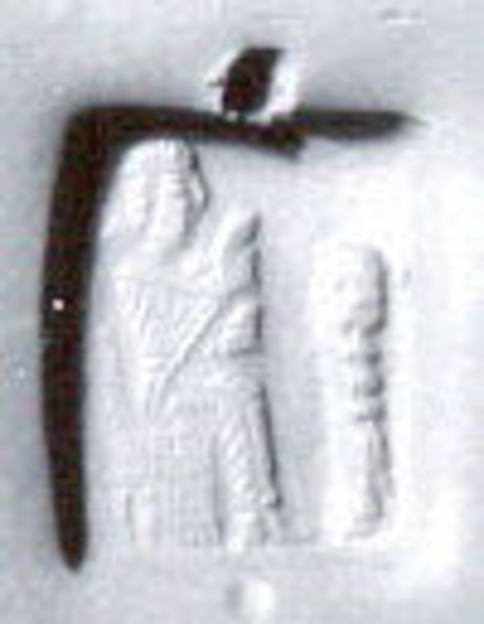
Period: Iron Age III
Date: ca. 8th–7th century B.C.
Geography: Urartu
Culture: Urartian
Medium: Hematite (?)
Dimensions: Seal Face: 1.28 x 1.01 cm Height: 0.37 cm
Classification: Stone-Stamp Seals
Other Types of Seals
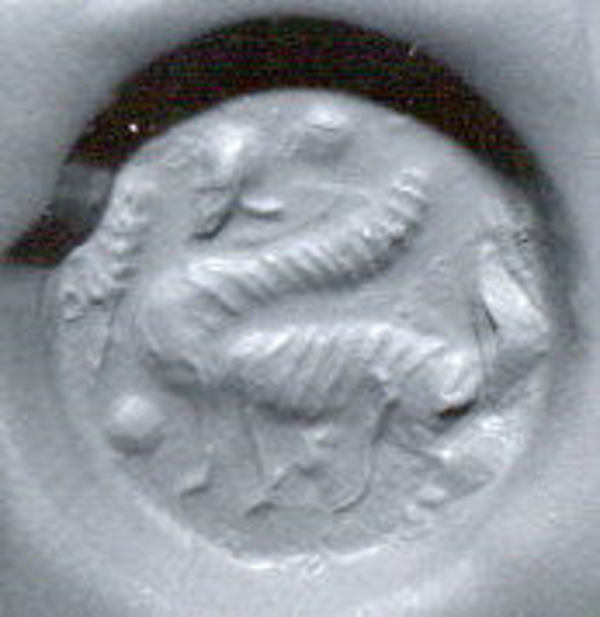
Period: Iron Age III
Date: ca. 8th–7th century B.C.
Geography: Urartu
Culture: Urartian
Medium: Marble
Dimensions: Diameter: 1.89 cm Height: 0.8 cm
Classification: Stone-Stamp Seals
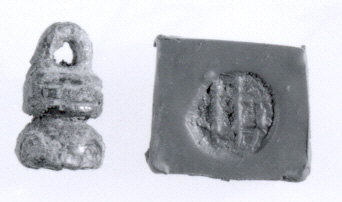
Period: Iron Age III
Date: ca. 8th–7th century B.C.
Geography: Urartu
Culture: Urartian
Medium: Copper/bronze alloy
Dimensions: Diameter: 1.16-2.0 Height: 2.9 cm
Classification: Metalwork-Stamp Seals

Period: Iron Age III
Date: ca. 8th–7th century B.C.
Geography: Urartu
Culture: Urartian
Medium: Copper/bronze alloy
Dimensions: Seal Face: 1.42 x 1.2 cm Height: 2.31 cm
Classification: Metalwork-Stamp Seals
Sources:
- Department of Ancient Near Eastern Art. “Urartu.” In Heilbrunn Timeline of Art History. New York: The Metropolitan Museum of Art, 2000.
- Merhav, Rivka. Urartu: A Metalworking Center in the First Millennium B.C.E. Jerusalem: Israel Museum, 1991.
- Piotrovskii, Boris B. Urartu. Geneva: Nagel, 1969.
- Annual Report of the Trustees of the Metropolitan Museum of Art 112 (July 1,1981 – June 30, 1982), p. 18.
- Pittman, Holly, in collaboration with Joan Aruz. 1987. Ancient Art in Miniature: Near Eastern Seals from the Collection of Martin and Sarah Cherkasky. New York: The Metropolitan Museum of Art.
- Annual Report of the Trustees of the Metropolitan Museum of Art 115 (Jul. 1,1984 – Jun. 30, 1985), p. 20.
- Annual Report of the Trustees of the Metropolitan Museum of Art 110 (Jul. 1,1979 – Jun. 30, 1980), p. 22.
- Annual Report of the Trustees of the Metropolitan Museum of Art 114 (Jul. 1, 1983 – Jun. 30, 1984), p. 19.
- Annual Report of the Trustees of The Metropolitan Museum of Art 116 (July 1, 1985 – June 30, 1986), p. 16.
- Annual Report of the Trustees of the Metropolitan Museum of Art 117 (Jul. 1,1986 – Jun. 30, 1987), p. 16.
- A Companion to the Archaeology of the Ancient Near East. Daniel T. Potts. 2012.
